Honda Cub 2019 Price
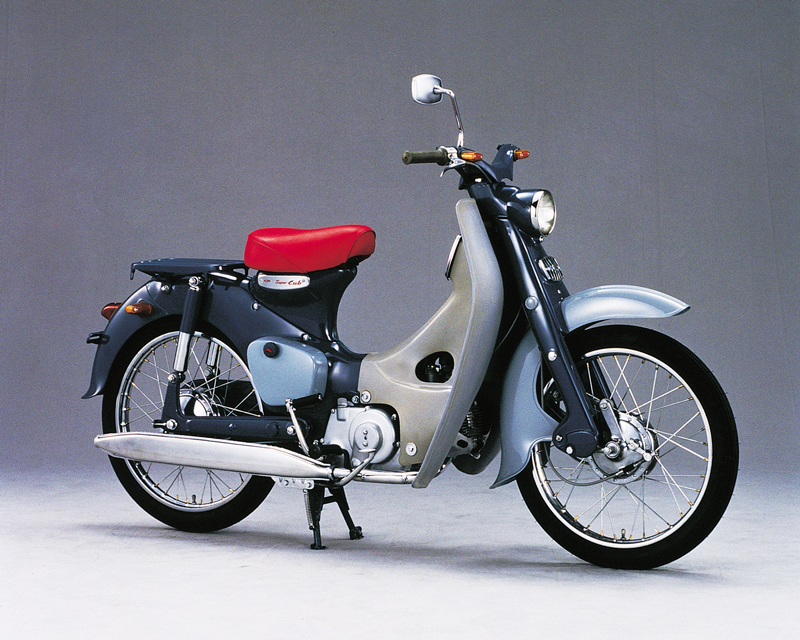
"You meet the nicest people on a Honda."
The year was 1963 and American Honda, which opened its doors in Los Angeles barely four years prior with eight employees, wanted to change the way car-loving Americans saw motorcycles. When Honda came to the United States in 1959, fewer than 60,000 motorcycles were sold here annually, with most of those being domestic and European models larger than 500cc.
Dealers were skeptical of this bold, upstart new Japanese company, essentially telling 39-year-old General Manager Kihachiro Kawashima, "Good luck, but you're just splitting a small pie into even smaller pieces." Undaunted, Kawashima responded: Fine, we'll make the pie bigger on our own. And the key to that bigger pie was the 50cc CA100, the "nifty, thrifty Honda Fifty," known in Japan as the Super Cub.
"To succeed in the U.S. is to succeed worldwide. To take up the challenge of the American market may be the most difficult thing to do, but it's a critical step in expanding the export of our products." –Takeo Fujisawa, Senior Managing Director and co-founder of Honda Motor Co., Ltd.
Advertisement
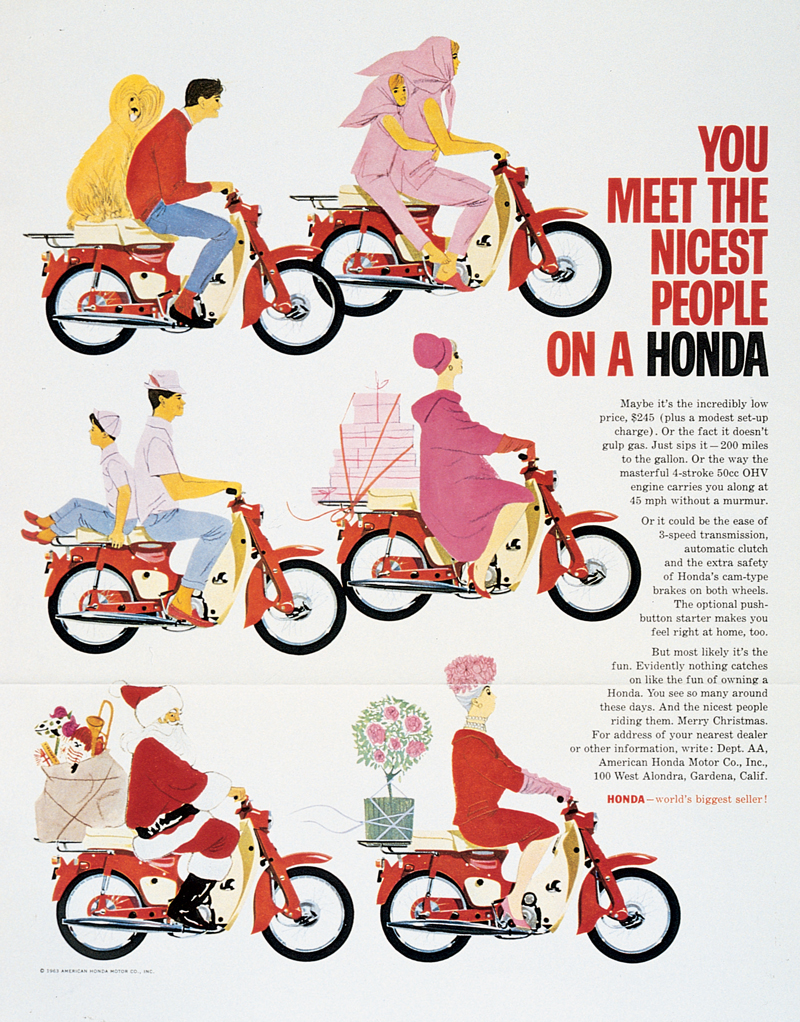
The Super Cub was designed to be accessible: a bike anyone could ride, rugged enough to handle the rough unpaved Japanese roads and with a quiet, fuel-efficient engine. Honda fitted it with its first-ever semi-automatic centrifugal clutch transmission, meaning gear changes were initiated by simply toeing the gearshift lever, no clutch required. The Japanese model was painted a lovely "sea and sky" combination of dark and light blue with a contrasting red single seat, reportedly inspired by Mr. Honda's penchant for wearing a red shirt and driving a red sports car.
Read our First Ride Review of the 2019 Honda Monkey!
The American version, meanwhile, had two-up seating and a bright, toy-like red and white paint job that reflected American Honda's strategy of marketing the Super Cub as something fun and unthreatening, the perfect accessory for modern youths of the Jet Age. It was a marked departure from the image most Americans had of motorcycles and "bikers" in general, personified by somewhat dangerous, black leather-clad young men, a laMarlon Brando in "The Wild One."
And it was a booming success. In 1961 Honda sold 17,000, in 1962 35,000 and in 1963, the year of the "You meet the nicest people" campaign, 90,000 CA100s were sold in the States.
The Super Cub's new image was "unlike anything that Americans had imagined before. It was that of a completely new vehicle; a motorcycle that simply didn't seem like one." –Kihachiro Kawashima, General Manager, American Honda Motor Co., Ltd.
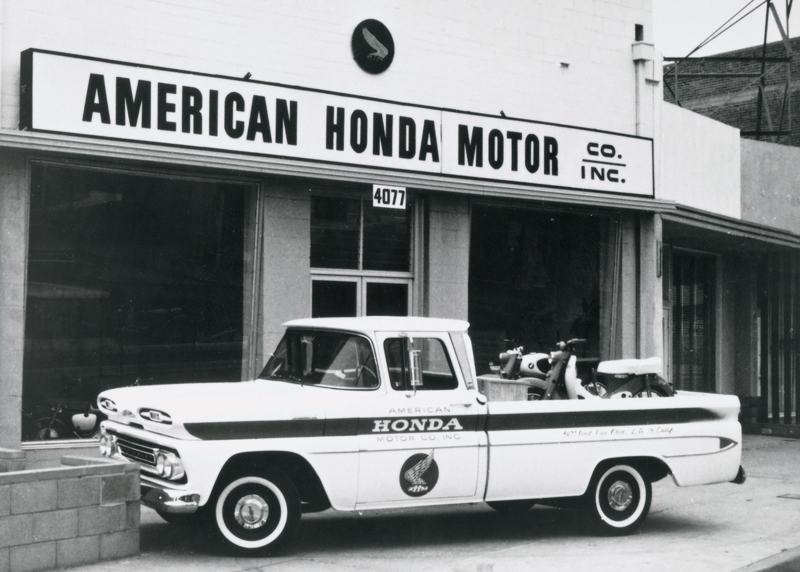
Unfortunately, like most booms the Super Cub ran its course in the U.S., with sales peaking in 1965 and then declining until the model was retired in 1974. It was replaced by the larger displacement C90 and C70 Passport, the last step-through Honda motorcycles sold in the States, which themselves disappeared from our shores after the 1983 model year.
The Super Cub lived on elsewhere, however, especially in Southeast Asia, where reliable, efficient, rugged and inexpensive two-wheeled transportation is a necessity. As of October 2017, more than 100 million Super Cubs had been sold worldwide, the most by far of any motorized vehicle in history. Meanwhile, the unassuming Super Cub had started a revolution, introducing Japanese motorcycles to the American masses and throwing the door wide open for the "Japanese Invasion" that swept the U.S. motorcycle and automotive markets in the late 1960s and beyond.
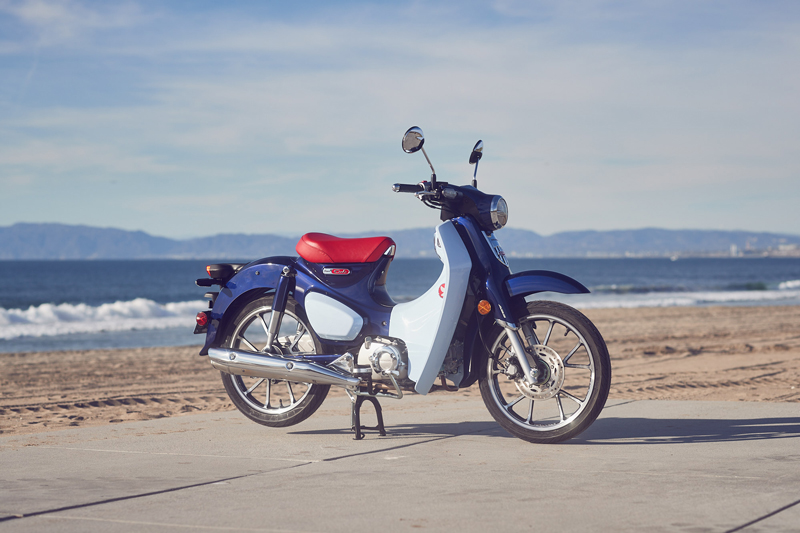
Return of the Super Cub
The year 2019 marks American Honda's 60thanniversary and also the return of its breakthrough model, now dubbed the Super Cub C125. Based around the air-cooled 125cc single used in the Grom and the Monkey, the 2019 Super Cub is almost as much a time machine as it is a motorcycle.
Fuel injection replaces the carburetor, 17-inch wheels are cast rather than spoked and carry modern tubeless tires, the front disc brake has standard ABS, there's no kickstarter and the instrument is a combination LCD fuel gauge/odometer/tripmeter/gear indicator with analog speedometer. But the bike still uses that same semi-automatic centrifugal clutch–since utilized in everything from Honda's mini dirt bikes to ATVs–and it looks almost exactly the way it did 60 years ago, in the classic Japanese "sea and sky" livery.
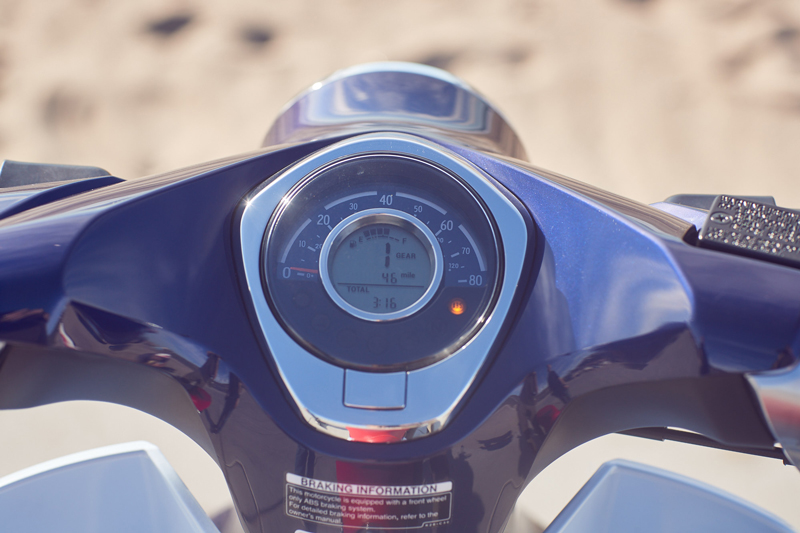
Since every story must start at the beginning, our press launch ride started at the original location of the American Honda Motor Company, a small, nondescript white building on Pico Blvd. west of downtown Los Angeles, where we swung a leg over our time machine–er, motorcycle.
The first clue this is a 2019 model, not a '62, is the key–or lack thereof. The proximity-sensing fob locks and unlocks the side cover storage (large enough to hold the owner's manual and not much else) and seat, under which are two helmet lock hooks and the fuel filler, and enables the ignition. Turn the ignition knob to "on," thumb the starter button and the Super Cub purrs to life.
Advertisement
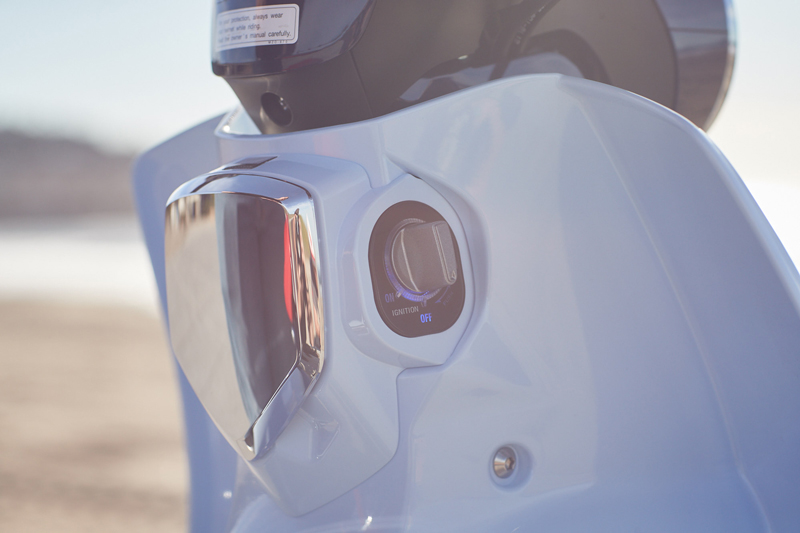
For a rider used to clutching or even Honda's own automatic DCT transmission, it takes a bit to get used to the lack of a clutch lever while continuing to toe a shifter. Neutral is at the bottom, then it's all up from there, gears one through four. The lever itself is a heel-and-toe design, and a couple of testers remarked that it was easier to push the heel plate for upshifts, especially with thick boots on.
The transmission uses a centrifugal clutch and a standard spring-loaded clutch plate; when you toe (or heel) the shifter the clutch plate pulls away, the gear changes and the plate returns. The system responds best to an easy-going pace, befitting the Super Cub's personality. I found that pushing rather than jabbing the lever and operating the throttle just like I would on a traditional bike–rolling it closed slightly during shifts–resulted in the smoothest operation.
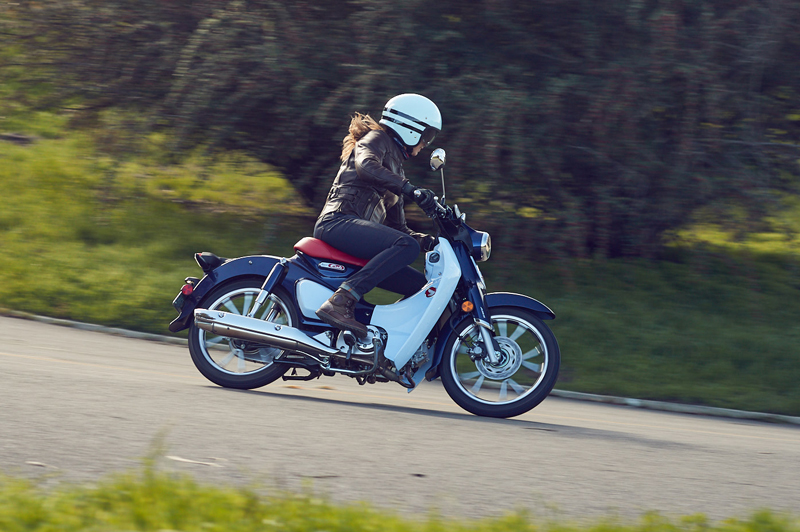
Jenny's Gear
Helmet: Shoei JO
Jacket: Olympia Janis
Jeans: Bolid'ster Jeny'ster
Boots: Rev'It Royale H2O
Like the Grom and Monkey, the Super Cub isn't designed for speed–55 mph is about the most you'll comfortably do, and 45 is even better–but the larger 17-inch hoops bestow a stability the other two lack and make it feel more like a "real" motorcycle. Our test ride meandered south and west, including plenty of impatient L.A. traffic, hills, road construction and even a police escort along the sandy boardwalk in Redondo Beach. The Super Cub handled it all with charm and grace, coaxing smiles from scowling, gridlocked drivers like a lion tamer soothing a roaring beast.
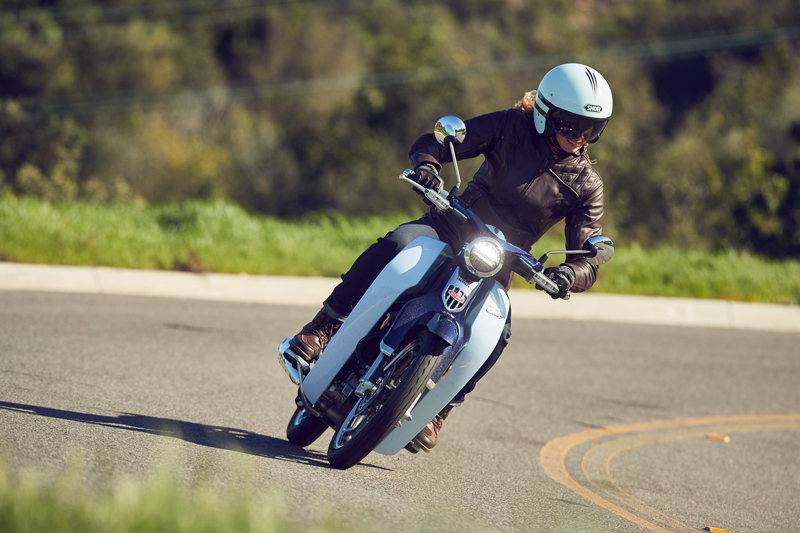
The little single, which probably generates 10 horsepower on a good day, feels smooth and comfortable, thanks at least partially to rubber pads on the rigid-mounted footpegs and the thickly padded red solo saddle. There is no adjustability to either the 26mm inverted front fork or the twin rear shocks, and no passenger accommodations (Honda does offer a nice accessory chrome luggage rack, however). Parking involves dismounting while holding the 240-pound bike upright, then lifting it onto its centerstand (there is no sidestand, nor is there a parking brake).
Check out our Best Bikes for Smaller Riders (and Budgets): 2019 Edition here.
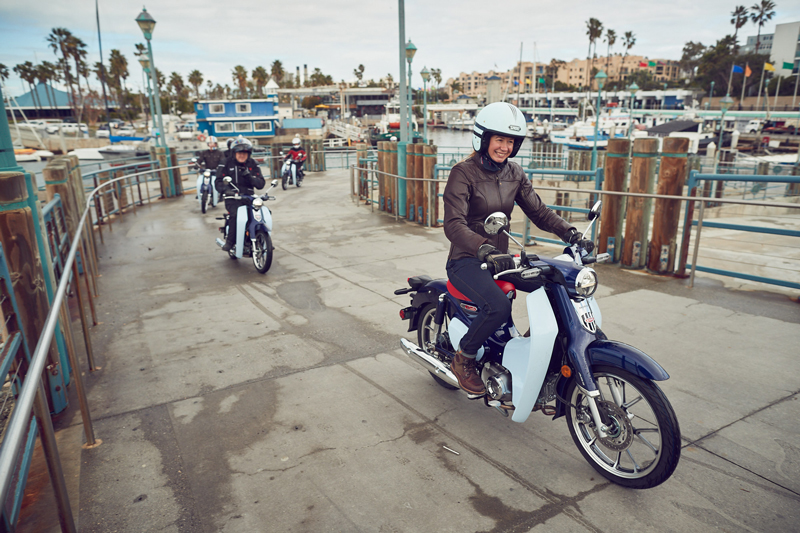
After rolling through the green hills of Palos Verdes, we turned our backs to the sea and cruised to the Honda North America campus. Our time machines had brought us full circle, from 1959's single, humble storefront with eight employees to the sprawling, 101-acre North American headquarters of the largest motorcycle manufacturer in the world. Honda had one more surprise for us, however.
Blocks away from the main campus, it maintains a private collection of cars and motorcycles, from the first Civic to milestone motorcycles to the latest IndyCar racecars. There they wheeled two bikes out of the museum, a 1961 Japanese-spec C100 Honda 50 and a 1980 C70 Passport, and let us take them for a quick spin. Pull the choke knob and give it a kick–the smooth purr feels immediately familiar. Three gears instead of four, a drum brake up front, but otherwise these were the same fun, easy to ride motorcycles we'd been traveling on all day. The circle closed, the story begins again.
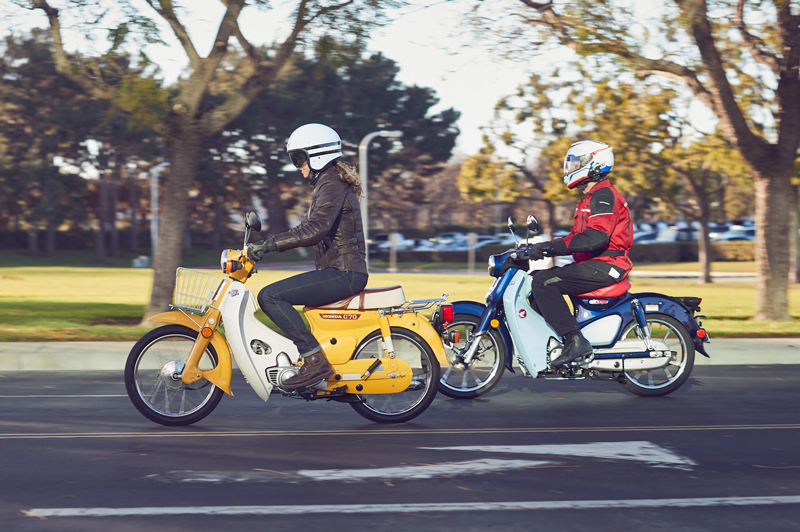
The Super Cub represents everything Honda was and has become, especially in the U.S. where it, aided by some deft marketing moves by American Honda, almost single-handedly altered American motorcycling culture forever. We're happy to see it again, and maybe it will even inspire a whole new generation of "nice people" to take up two wheels.

Check out Rider's Guide to New/Updated Street Motorcycles for 2019
2019 Honda Super Cub C125 ABS Specs
Base Price: $3,599
Website: powersports.honda.com
Engine Type: Air-cooled single, SOHC, 2 valves
Displacement: 125cc
Bore x Stroke: 52.4 x 57.9mm
Transmission: 4-speed, semi-automatic centrifugal clutch
Final Drive: Chain
Wheelbase: 48.9 in.
Rake/Trail: 26.5 degrees/2.8 in.
Seat Height: 30.7 in.
Claimed Wet Weight: 240 lbs.
Fuel Capacity: 1.0 gal.
Avg. MPG: NA
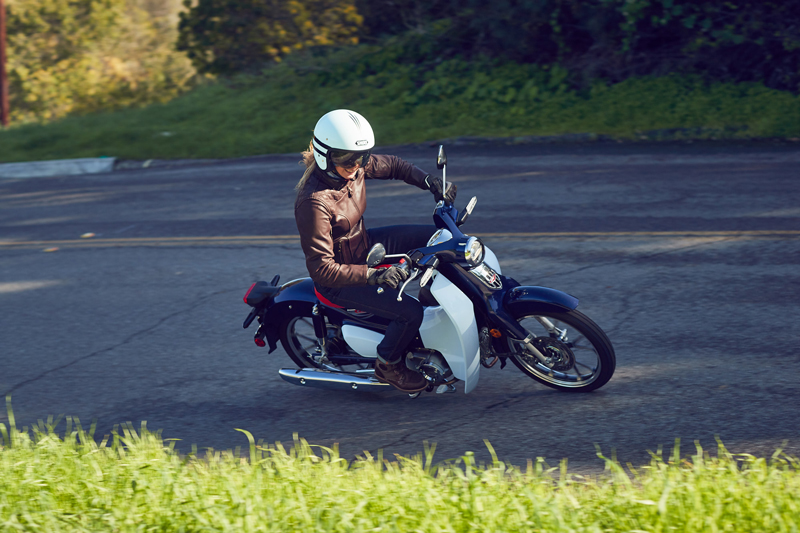
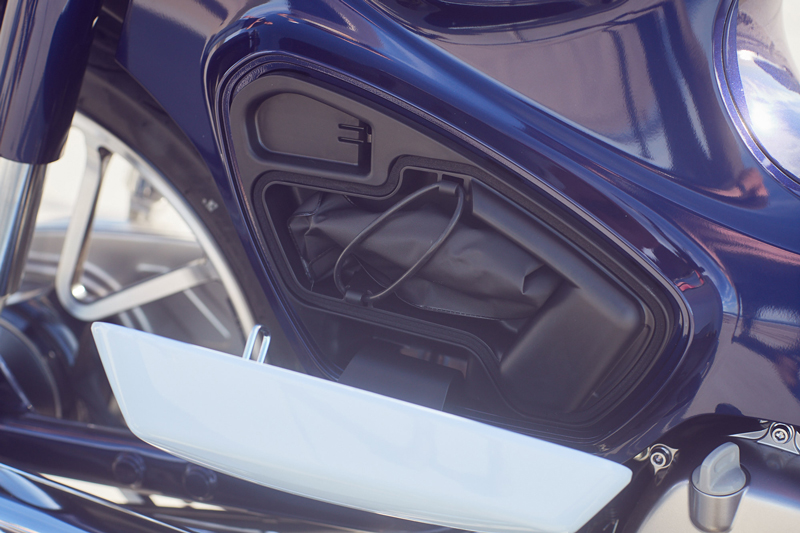
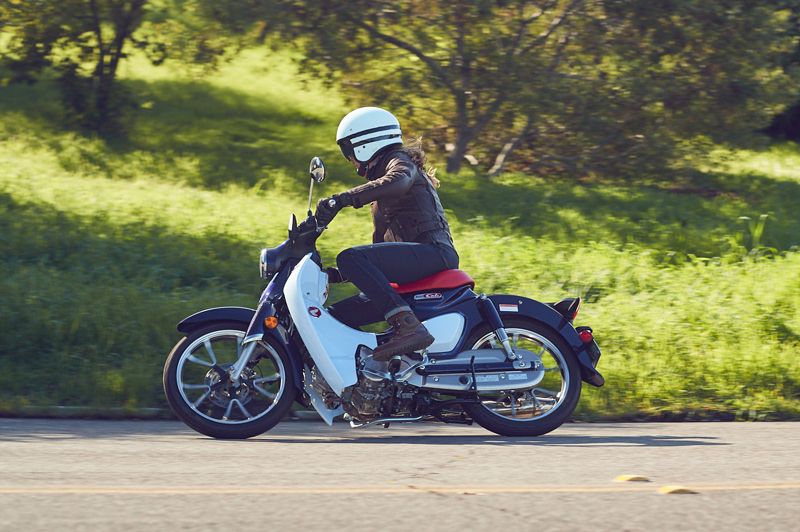
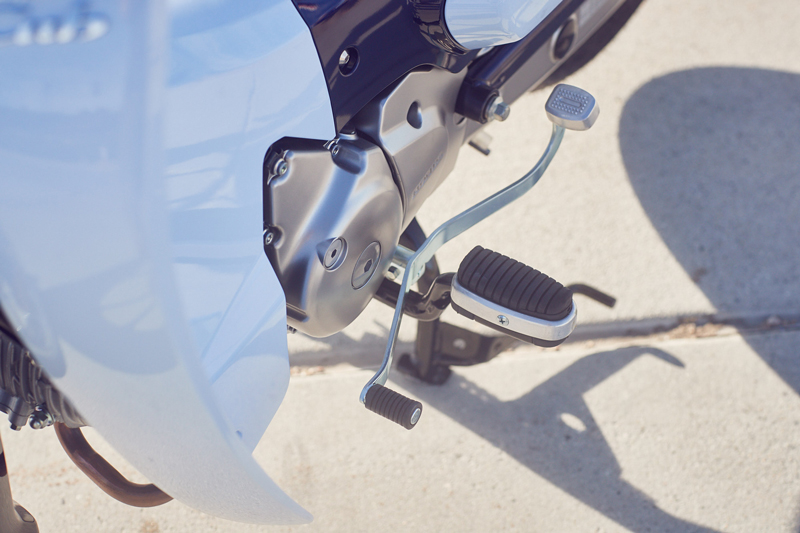
Source: https://ridermagazine.com/2019/02/08/2019-honda-super-cub-c125-abs-first-ride-review/

Tidak ada komentar: